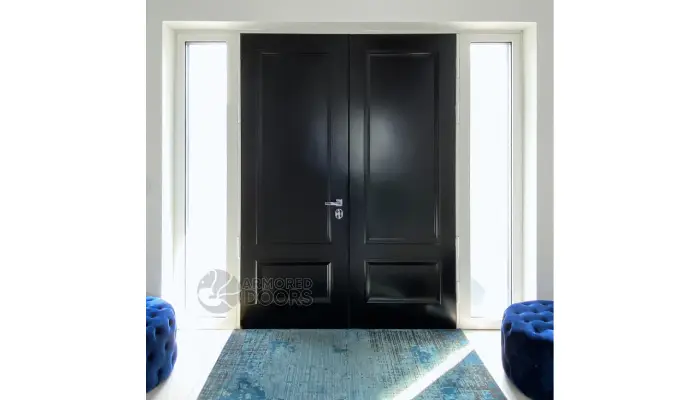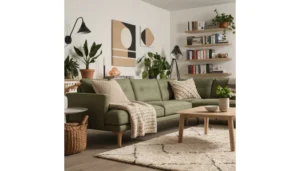Why Modern Security Doors Are Better Than Traditional Doors?
Modern security doors use reinforced materials, tamper-proof hinges, and multi-point locks for durability and safety, plus fire resistance, weatherproofing, energy efficiency, and stylish designs.

Modern security doors offer several advantages over traditional doors, mainly due to their stronger materials like reinforced steel and aluminum, which provide greater durability and resistance to break-ins. Unlike wooden or composite doors, these security doors include features such as tamper-proof hinges and multi-point locking systems that make forced entry much harder. Many also have fire-resistant qualities and weatherproof construction, so they hold up better over time. Besides safety, modern designs come in various styles and finishes to match any home’s look while improving energy efficiency through insulation. Although costlier upfront, they bring peace of mind and added value that traditional doors often lack.
Material Strength and Durability of Modern Security Doors
A modern security door is built with reinforced steel, aluminum, or other durable metals, making them far stronger than traditional wood, UPVC, or composite doors. Their frames are securely anchored to the building structure, which significantly increases resistance to physical attacks like kicking or prying. Unlike wooden doors that can dent, warp, or crack over time, metal panels maintain their shape and strength even after heavy impact or exposure to harsh weather. Many models also include fire-rated materials that slow down fire spread, adding an extra layer of safety. To combat rust and wear from outdoor elements, these doors come with corrosion-resistant coatings, ensuring long-lasting appearance and performance. The use of welded joints and continuous seams instead of nails or glue enhances structural integrity, making it much harder for intruders to exploit weak points. Reinforced corners and edges provide additional protection at vulnerable spots, reducing the chance of forced entry. Tested to meet or exceed industry standards for impact resistance and durability, these doors can withstand severe weather conditions such as hail and strong winds without damage. Overall, the heavy-duty materials and construction methods mean modern security doors keep their security features intact and look good for years with minimal maintenance.
How Modern Security Doors Resist Forced Entry?
Modern security doors are specifically designed to resist forced entry through a combination of advanced engineering and robust materials. Unlike traditional doors, they use reinforced steel frames anchored deeply into the building structure, which helps the door withstand strong impacts from kicks, battering rams, or crowbars. One key feature is tamper-proof or concealed hinges that prevent attackers from removing the door by simply taking out hinge pins, a common weak point in older doors. Multi-point locking systems secure the door at several points along the frame, making it much harder to pry open compared to single-point locks found in traditional doors. These locks often include high-security cylinders that resist picking, drilling, and bumping, common techniques used by intruders. Additional reinforcements such as heavy-duty deadbolts combined with latch bolts increase holding strength, while reinforced strike plates are installed deep into the frame to prevent splitting during break-in attempts. Some modern security doors even incorporate internal reinforcement bars for better resistance to bending or twisting. Electronic or smart lock options add extra layers of protection by allowing remote access, automatic locking, and real-time alerts, which traditional mechanical locks cannot provide. Many of these doors also meet strict safety and security certifications, verifying their ability to deter and delay forced entry attempts effectively. Together, these features create a door that not only delays an intruder but often discourages attempts altogether, providing a much higher level of security than traditional doors.
- Security doors are engineered to withstand forceful impacts from kicks, battering rams, or crowbars.
- They often have tamper-proof or concealed hinges that prevent attackers from removing the door by taking off hinge pins.
- Multi-point locking systems lock the door securely at multiple points along the frame, making it much harder to pry open than single-point locks.
- High-security lock cylinders resist picking, drilling, bumping, and other common lock manipulation techniques.
- Some doors include reinforced strike plates installed deep into the door frame to prevent frame splitting during break-in attempts.
- Electronic or smart locks add layers of security with remote access, alerts, and automatic locking features.
- Heavy-duty deadbolts combined with latch bolts increase holding force under attempted forced entry.
- Security doors may feature additional internal reinforcement bars for better resistance to bending or twisting.
- Many models comply with safety and security certifications that verify their effectiveness against forced entry.
- The combination of strong materials, advanced locks, and reinforced design elements greatly reduces the chance of a successful break-in.
Extra Protective Features of Security Doors
Modern security doors come with several protective features that go far beyond what traditional doors offer. For example, bulletproof door options provide a level of defense against firearms, something traditional wood or metal doors simply cannot match. Many security doors include durable stainless steel mesh screens that let fresh air and natural light in while keeping insects out and preventing unauthorized entry. These doors also often resist environmental challenges like UV rays, moisture, and extreme temperatures, helping them maintain their strength and appearance over time. Fire-resistant cores or layers are built into some models to delay fire penetration, giving occupants valuable extra time in emergencies. Noise-reducing materials are another benefit, helping to block outside sounds and create a more comfortable indoor environment. Special anti-rust and weatherproof coatings protect against corrosion and wear from regular use and harsh outdoor conditions, extending the door’s lifespan. Some security doors come equipped with integrated alarms that activate if the door is tampered with or forced open, adding another layer of security. Reinforced or impact-resistant glass panels offer visibility without compromising safety, and innovative ventilation features allow airflow without sacrificing protection. Altogether, these extra features make modern security doors a comprehensive shield against both physical threats and environmental damage.
Visible Deterrence and Enhanced Home Safety
The strong, imposing presence of modern security doors acts as an immediate visual warning to potential intruders, signaling that the home is well-protected. Unlike traditional doors, these security doors often feature visible multi-point locks and reinforced frames, making tampering more difficult and less attractive to burglars. This clear show of strength often causes criminals to move on to easier targets, reducing the chances of a break-in attempt. Additionally, security doors slow down forced entry attempts, increasing the likelihood that neighbors, passersby, or security systems will notice suspicious activity. When combined with other safety measures like cameras, alarms, lighting, and motion sensors, security doors create a layered defense that improves overall home safety. Beyond physical protection, homeowners gain peace of mind knowing there is a tangible barrier against intrusion. This psychological effect not only benefits individual families but also supports community safety by lowering crime risk and improving neighborhood security perception.
Design Flexibility and Style Options
Modern security doors offer a wide range of design options that go far beyond the plain, industrial look often associated with security features. Homeowners can choose from traditional to contemporary styles, ensuring the door complements the overall home aesthetic. Custom color choices allow the door to blend seamlessly with exterior paint or trim, while finishes like wood grain effects, matte, gloss, or metallic appearances provide visual versatility. Decorative grilles and patterns add character without compromising security, and glass panels made from reinforced or laminated safety glass can be incorporated for an elegant touch. Different panel styles, flat, raised, or textured, allow further customization, and hardware finishes such as brushed nickel, bronze, or black accommodate personal preferences. These doors are also adaptable to various sizes and configurations, including double doors or sliding panels, with some manufacturers offering bespoke design services for unique architectural needs. This broad selection disproves the idea that security doors must look uninviting or purely functional, making it easier for homeowners to enhance both safety and curb appeal.
Energy Efficiency and Additional Benefits
Modern security doors offer more than just protection; they also contribute significantly to energy efficiency. Many models feature insulated cores that improve thermal performance, helping to keep indoor temperatures stable throughout the year. This reduces the need for constant heating or cooling, which in turn lowers energy bills. Tight seals and weather stripping prevent drafts and moisture from entering the home, contributing to a more comfortable living environment. Additionally, some security doors come with reflective coatings that reduce heat gain during hot summer months, further easing the load on air conditioning systems. Beyond energy savings, these doors can reduce noise pollution, making indoor spaces quieter and more peaceful. From a financial standpoint, upgrading to modern security doors can increase property value, as buyers appreciate the combination of enhanced security and energy efficiency. In some cases, homeowners may even qualify for energy rebates or incentives when choosing certain materials. The durability of these doors means fewer replacements and repairs over time, which adds to long-term savings and sustainability. Altogether, modern security doors provide practical benefits that go beyond safety, improving comfort, lowering expenses, and supporting greener living.
Maintenance Needs and Longevity of Security Doors
Modern security doors stand out for their low maintenance demands and long-lasting performance compared to traditional doors. Thanks to durable coatings that resist rust and corrosion, these doors require mostly routine cleaning and simple inspections of locks and hinges to stay in good shape. The materials used, such as reinforced steel or aluminum, resist warping, cracking, and fading, which helps maintain their appearance and function over time. Periodic lubrication of locks and hinges keeps the door operating smoothly, while repairs, if necessary, tend to be straightforward due to standardized parts and modular designs. Protective finishes can also be reapplied when wear shows, further extending the door’s lifespan. Typically, the structural integrity of these doors remains solid with minimal wear under normal use, often outlasting wooden or composite doors by years. Manufacturers commonly back this durability with warranties that reflect expected longevity. All these factors contribute to fewer replacements and repairs, ultimately reducing the overall cost of ownership for homeowners.
Comparing Costs: Security Doors versus Traditional Doors
Security doors generally come with a higher upfront price due to their strong materials and advanced locking systems, which can make them seem costly at first glance. However, this initial expense is often balanced out by their longer lifespan and reduced need for repairs or replacements compared to traditional doors. For example, while a wooden door might warp or crack over time, requiring frequent maintenance, a security door made from reinforced steel or aluminum resists weather damage and wear, cutting down ongoing costs. Additionally, many security doors include insulation that helps lower energy bills by keeping indoor temperatures steady, which adds up to noticeable savings over the years. Another financial advantage is that enhanced home security from these doors can lead to lower insurance premiums in some cases, further offsetting the cost. Plus, installing security doors often increases property value, making it a smart investment when considering resale potential. Traditional doors, though cheaper initially, may end up costing more through frequent upkeep, replacements, and potential damages from break-ins or vandalism. Smart lock options on security doors add convenience and extra security, but they can increase the starting price. Overall, when factoring in safety, durability, energy efficiency, and potential savings, the total cost of ownership for security doors tends to be more favorable than that of traditional doors.
Frequently Asked Questions
1. How do modern security doors improve home protection compared to traditional doors?
Modern security doors use stronger materials like steel and reinforced frames, which make them harder to break or force open than traditional wood or standard doors. They also often include advanced locking mechanisms and impact-resistant designs, increasing overall safety.
2. In what ways do modern security doors enhance energy efficiency beyond what traditional doors offer?
Many modern security doors are built with insulated cores and weather-resistant seals that help reduce heat loss and keep out drafts. This improved insulation can lower energy bills and maintain a consistent indoor temperature better than most traditional doors.
3. Can modern security doors provide better noise reduction than traditional doors? If so, how?
Yes, modern security doors often incorporate soundproofing features like thicker materials and insulated panels. These elements help block outside noise more effectively than typical wooden or hollow-core traditional doors, making interiors quieter and more comfortable.
4. How has technology integration in modern security doors advanced compared to traditional doors?
Modern security doors can come equipped with smart locks, biometric access, and remote control features that allow homeowners to monitor and control entry from their phones. Traditional doors generally lack these technological enhancements, relying only on manual keys and locks.
5. What maintenance differences exist between modern security doors and traditional doors?
Modern security doors are designed with durable, low-maintenance materials such as powder-coated metal or composite panels that resist rust, warping, and weather damage. Traditional wood doors often require more frequent painting, sealing, or repairs to maintain their condition over time.
TL;DR Modern security doors offer clear advantages over traditional doors in strength, durability, and resistance to forced entry. Made from reinforced metals with multi-point locks and tamper-proof features, they provide better protection against break-ins and environmental hazards. These doors also come with extra options like bulletproofing, improved energy efficiency, and customizable designs that fit various home styles. While initially more expensive, their low maintenance, longer lifespan, and added property value make them a smart investment for enhanced safety and peace of mind.

Lyle Vasquez is a technology blogger based in Connecticut. He has been passionate about technology since early childhood when he used to take apart and rebuild computers in his parent’s garage. Lyle’s tech-related blog posts are written to help others learn how to use the latest technology tools and devices. He loves to find new ways to integrate technology into everyday life. Lyle is a great resource for tech enthusiasts looking to stay up to date on the latest technologies.





